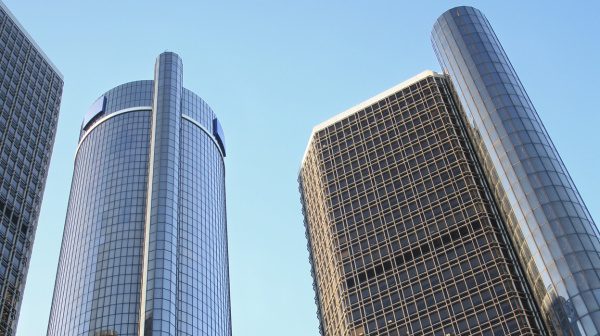How Collaborative Funding Builds New Economic Opportunities in Detroit

The city of Detroit, Michigan, is interested in converting unused open space into a haven for residents, with new recreation opportunities, urban farms, sustainable stormwater infrastructure and natural reserves. CH2M Senior Economist and Planner Mike Matichich and Water Resources Engineer Mark Mittag elaborate on how collaborative funding can lead to economic opportunities.
Open space areas can function as an economically and environmentally productive landscape for cities, but can be a challenge for cities with fiscal constraints. The Detroit Future City (DFC) Strategic Framework is an ambitious initiative aimed at creating vibrant, open spaces and thriving neighborhoods throughout the city of Detroit. Its vision and recommended actions are intended to guide decision making by all of the stakeholders in Detroit.
In an effort to continue to advance the transformation of Detroit’s vacant land into an open space amenity, the DFC Implementation Office commissioned the Center for Community Progress (CCP) to identify creative funding strategies to support the Strategic Framework development and implementation. CH2M was invited to join CCP’s team, and worked closely with CCP and the Natural Resources Defense Council (NRDC) to support this exciting effort.
By combining some of the industry’s most advanced analysis tools with a collaborative funding identification process, the resulting funding study evaluated more than 45 funding sources — many of them previously untapped — to help implement the Strategic Framework’s vision into a future reality.
Primary sources for identifying these funding opportunities came from the Smart City Council’s Smart Cities Financing Guide and the Infrastructure Financing Options for Transit-Oriented Development, which CH2M developed as part of Environmental Protection Agency’s Smart Growth Program.
As part of this comprehensive study, we assessed the applicability of dozens of funding strategies against eight priority land use options, including:
- Productive landscape including urban farms, solar, biofuel and tree farms.
- Green stormwater infrastructure.
- Natural land use including meadows and forests.
- Public open space for parks and recreation.
We then grouped the most feasible funding opportunities — traditional to emerging — into six primary categories:
- Direct fees including user fees and general funds.
- Debt tools including industrial revenue and green infrastructure bonds.
- Credit assistance tools including federal loan guarantees.
- Private sources including public-private partnerships and social impact funds.
- Value capture mechanisms including special improvement districts and tax increment financing.
- Grant funding including state, federal and institutional options.
As a result of this CCP-led work, DFC, city agencies, developers and other stakeholders now have a range of funding options for the envisioned 13,000 acres of open space in Detroit.
For cities seeking creative funding solutions for implementing smart technologies, this innovative approach provides a powerful model for mapping available funding sources to priority development needs and capital investments.
Additional information about DFC and the study can be found on DFC’s blog. A version of this article appeared on Smart Cities Council.


